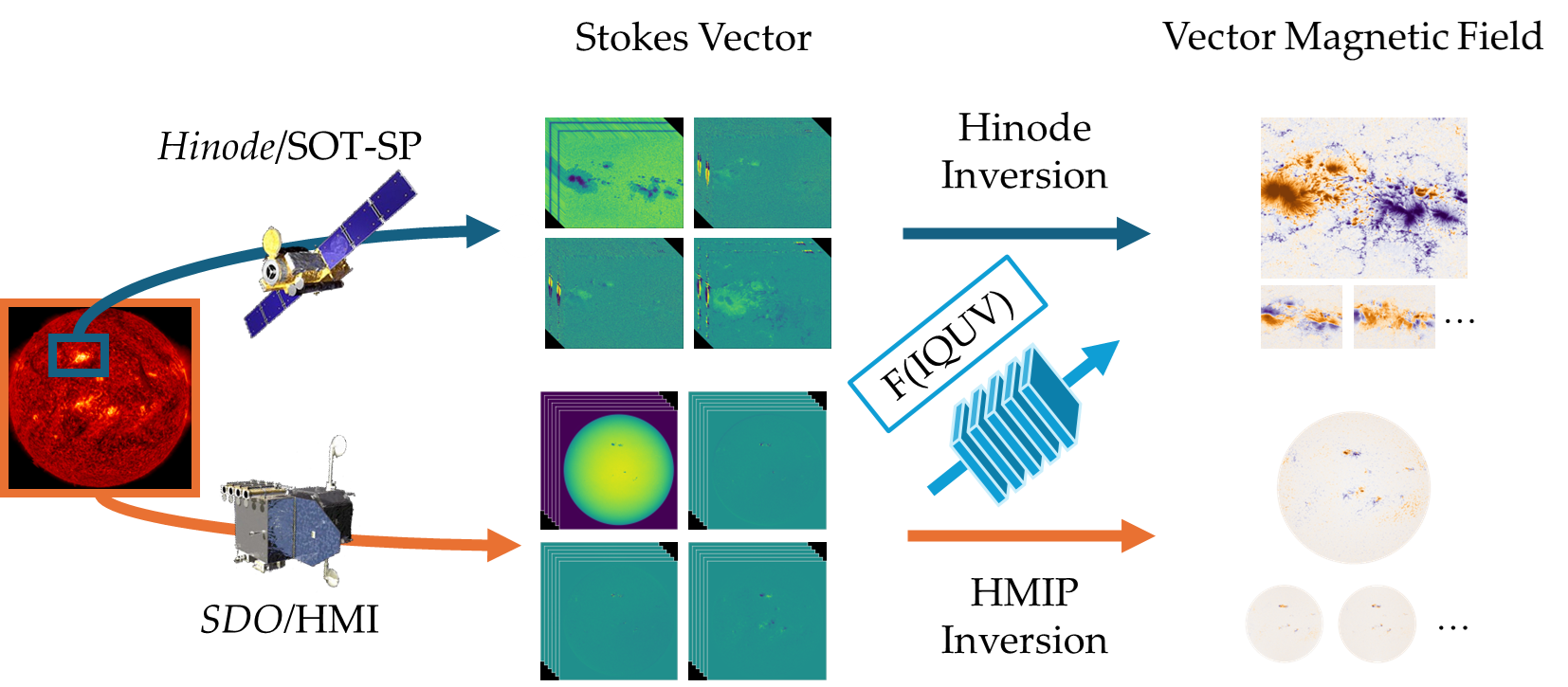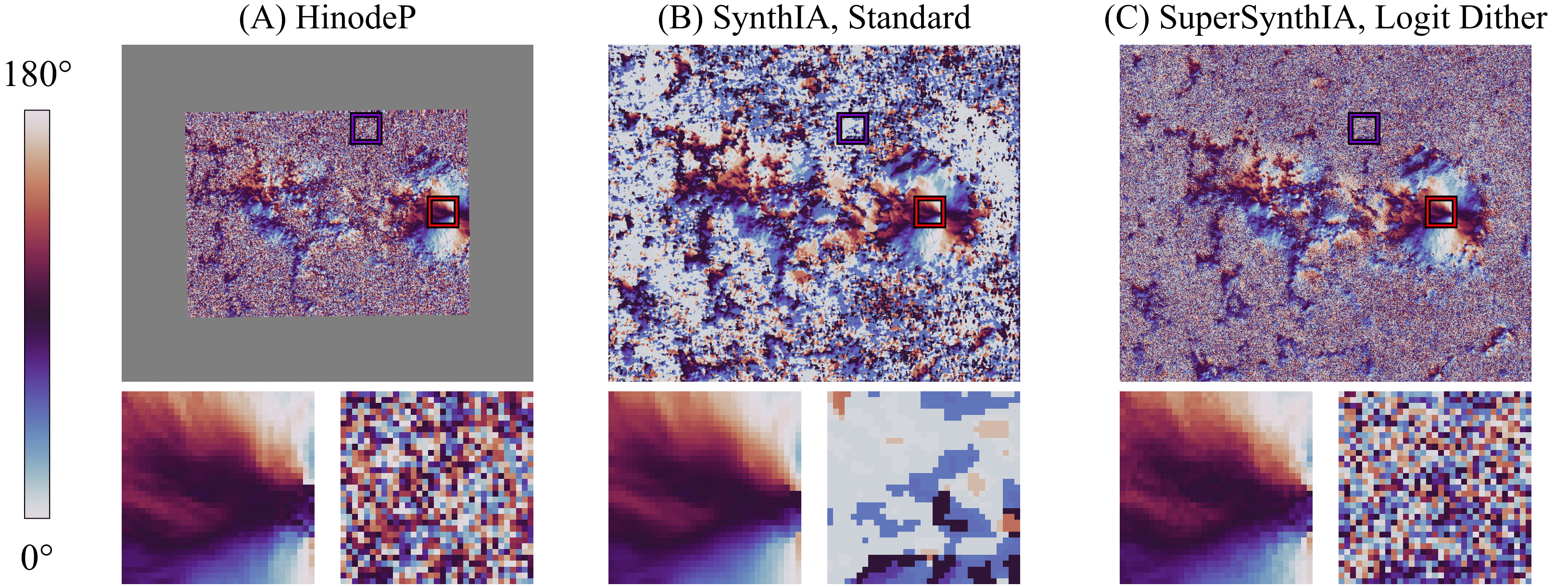Vector magnetograms of the Sun's photosphere are cornerstones for much of solar physics research.
These data are often produced by data-analysis pipelines combining per-pixel Stokes polarization
vector inversion with a disambiguation that resolves an intrinsic 180-degree ambiguity. We introduce
a learning-based method, SuperSynthIA, that produces full disk vector magnetograms from Stokes
vector observations. As input, SuperSynthIA uses Stokes polarization images from SDO/HMI. As
output, SuperSynthIA simultaneously emulates the inversion and disambiguation outputs from the
Hinode/SOT-SP pipeline. Our method extends our previous approach SynthIA by providing direct
heliographic outputs and using an improved dataset and inference method.
SuperSynthIA provides another tool for solar data analysis in the form of vector magnetograms
resembling Hinode/SOT-SP but available across the full disk with SDO/HMI. Compared to our previous
SynthIA, SuperSynthIA provides physically-ready vector magnetograms and mitigates unphysical angle
preferences and banding artifacts in SynthIA. SuperSynthIA data are substantially more temporally
consistent than those from the SDO/HMI pipeline, most notably seen in, e.g., evolving active regions.
SuperSynthIA substantially reduces noise in low-signal areas, resulting in less center-to-limb bias outside
of strong-signal areas. We show that outputs from SuperSynthIA track the SDO/HMI-recorded
evolution of the magnetic field. We discuss the limitations of SuperSynthIA that the user must understand,
and we demonstrate a broad set of evaluations to test SuperSynthIA and discuss remaining
known artifacts. Our tests provide both methodology and evidence that SuperSynthIA outputs are
ready for use by the community, and that learning-based approaches are suitable for physics-ready
magnetograms.





